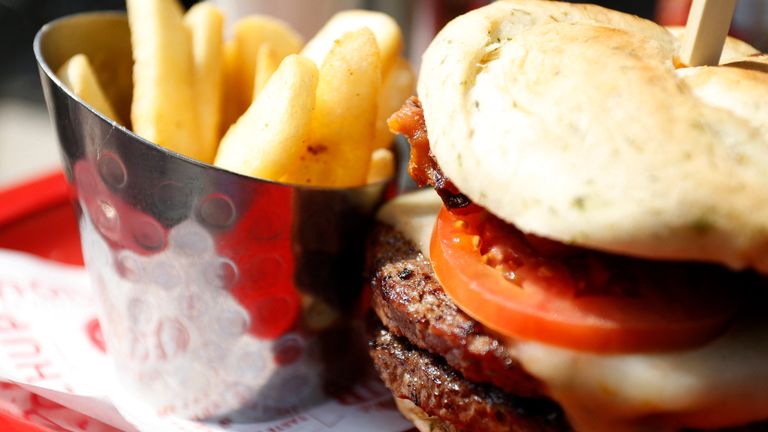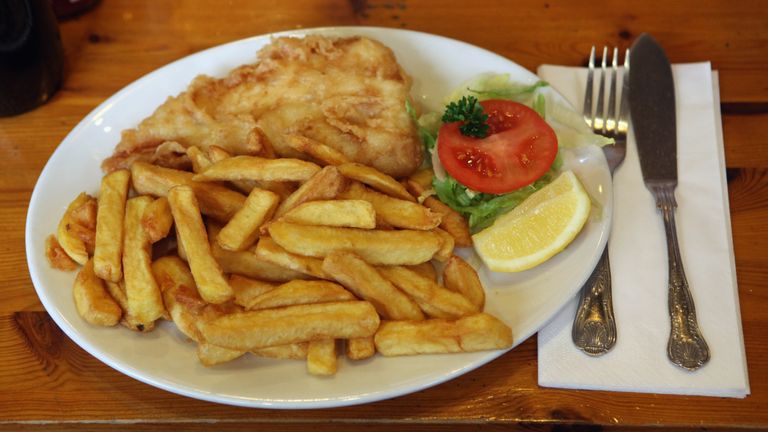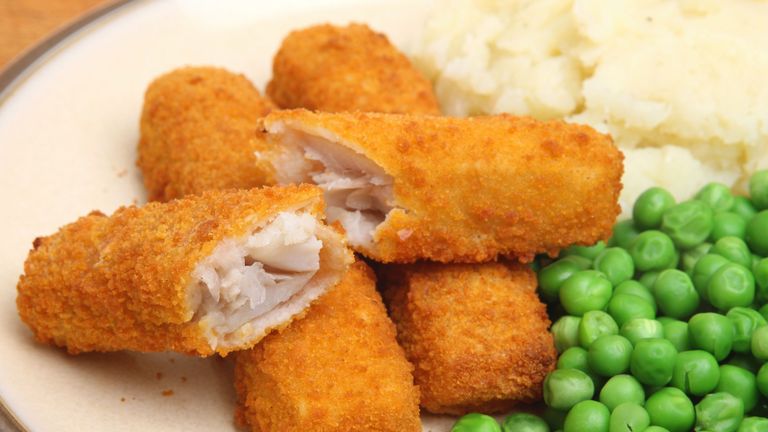More pain ahead for struggling UK restaurants
Life is tough for the restaurant business, with a 20% rise in failures last year, but many are going to find the pain gets worse.
Wednesday 28 February 2018 14:07, UK
It is not new news - despite the shock of names like Toys R Us UK and Maplins collapsing - that retailers are finding life tough.
The gradual switch towards online shopping and the propensity of consumers to change tastes more rapidly than was once the case, partly as a result of the rise of social media, has been happening for at least a decade.
However, less attention has paid to the crisis in the UK restaurant sector, which over time threatens to leave at least as many empty sites on Britain's high streets as higher-profile retail failures.
The Italian restaurant chain Prezzo looks set to announce in coming days that it will close one in three of its 300 UK sites as it enters a Company Voluntary Arrangement in order to continue trading while reaching a compromise with its creditors. Several hundred jobs are likely to go as a result.
The same process at the end of January saw celebrity chef Jamie Oliver's chain Jamie's Italian announce plans to close 12 of its 37 sites with the loss of 450 jobs. A further restaurant operated by the chef's steakhouse chain, Barbecoa, also closed last week after its parent company was placed into administration.
Byron, the upmarket burger chain favoured by the former Chancellor George Osborne, also entered a CVA at the end of January that is likely to see 20 of its 67 sites close.
January also saw Strada, the Italian restaurant chain, announce plans to close 10 of its 26 sites while Square Pie, the gourmet pie and mash chain, went into administration with the closure of five sites and the loss of 50 jobs.
Other casualties during the last 12 months have included the Handmade Burger Co, which has closed nine of its 20 sites after collapsing into administration.
In all, restaurant closure rates during recent years have been worse than during the recession. Last year alone saw a 20% rise in restaurant failures.
Those operators who have survived have had to take severe remedial action, most notably the Restaurant Group, whose 500 UK sites include the Frankie & Benny's, Chiquito and Garfunkel's sites, which has cut prices and introduced more budget options on its menus.
So what's been going on? Partly it is down to the same factors that have crippled high street retailers - onerous rents, soaring business rates and higher employment costs as a result of the National Living Wage. In addition, food prices have gone up in many cases, due to the fall in the pound over the last 18 months. Consumers, meanwhile, are spending more cautiously.
Another factor is over-capacity. This has particularly afflicted particular sub-sectors, notably upmarket burgers, where the last decade has seen rapid expansion at the likes of Handmade Burger Co, Gourmet Burger Kitchen, Byron, Five Guys, Shake Shack and Honest Burgers.
This has partly been driven by an influx of money from the private equity sector, which has been quick to back any concept or brand with an apparently winning formula, resulting in some chains adding capacity where there was not necessarily sufficient demand.
Byron, for example, was owned by private equity.
The process was also assisted by an eagerness on the part of landlords to fill sites vacated by retailers with restaurants.
The bigger concern is that more structural shifts are happening. Consumers are less loyal to restaurant brands than they once were and more willing to experiment with new concepts like street food.
The fast casual format, one of the most rapidly growing concepts of recent years, also looks to have peaked as consumers draw in their horns.
Even some of the more highly-rated newcomers to this sector, such as the Franco Manca pizza chain, are not growing at the rate at which they once were.
One of the beneficiaries of this appears to be the pub sector which, during the last year, has increased its share of the 'dining out' market at the expense of restaurants.
Douglas Jack and Ivor Jones, the leisure analysts at stockbroker Peel Hunt, told clients earlier this week: "We believe non-premium restaurants are vulnerable to losing trade to premium pubs, which offer high-quality food and drink in very attractive and characterful surroundings."
At the value end of the market, the cheapest restaurant operators have also been losing business to the likes of Greggs, the UK's largest bakery chain.
Another big structural shift taking place is the rise of delivery services, like Deliveroo and UberEats, which have brought an estimated 85,000 pubs and restaurants into the market that did not previously deliver food.
This risks breaking the relationship between restaurants and their customers.
Restaurants who used delivery services are effectively contracting out their relationship with the customer - a key factor in building and reinforcing loyalty.
A customer who has received a poor-quality meal, perhaps because the driver has taken too long to deliver it and the food has dried out en route, is unlikely to use that restaurant again.
By contrast, a restaurant owner confronted with an unhappy customer, can immediately knock an offending item off the bill or offer a free drink by way of compensation.
So there is little doubt delivery services are also eating into the 'dining out' market and this may also cost jobs, over time, as traditional restaurants that employ waiting staff in expensive locations give way to lower-cost food preparation sites operating out of cheaper locations and capable of serving a wider catchment area.
Even where they remain in a traditional dining in format, the rise of delivery chains can also raise the pain for restaurants, since they sometimes need to hike prices to cover the commission paid to the delivery services - putting at risk the notion that they are offering value for money to the customer.
It is no coincidence that some of the most eager adopters of delivery services have been relatively cut-price chains such as McDonald's and Subway.
The risk for the big established operators is that they get sucked into a spiral of continually having to cut prices to lock in the loyalty of customers.
Pizza Express, now owned by the Chinese company Hony, is a good example of how the credentials of a restaurant brand can easily be tarnished by continual 'two-for-one' offers and issuing vouchers.
Once locked into that process, it is difficult for a restaurant operator to wean customers off discounts.
So what happens next? The Peel Hunt team believe that restaurants operating at the premium end of the market, who are able to offer a differentiated experience, should find the going somewhat easier.
At the fast casual end of the market, though, it looks as if there will be more pain to come.











